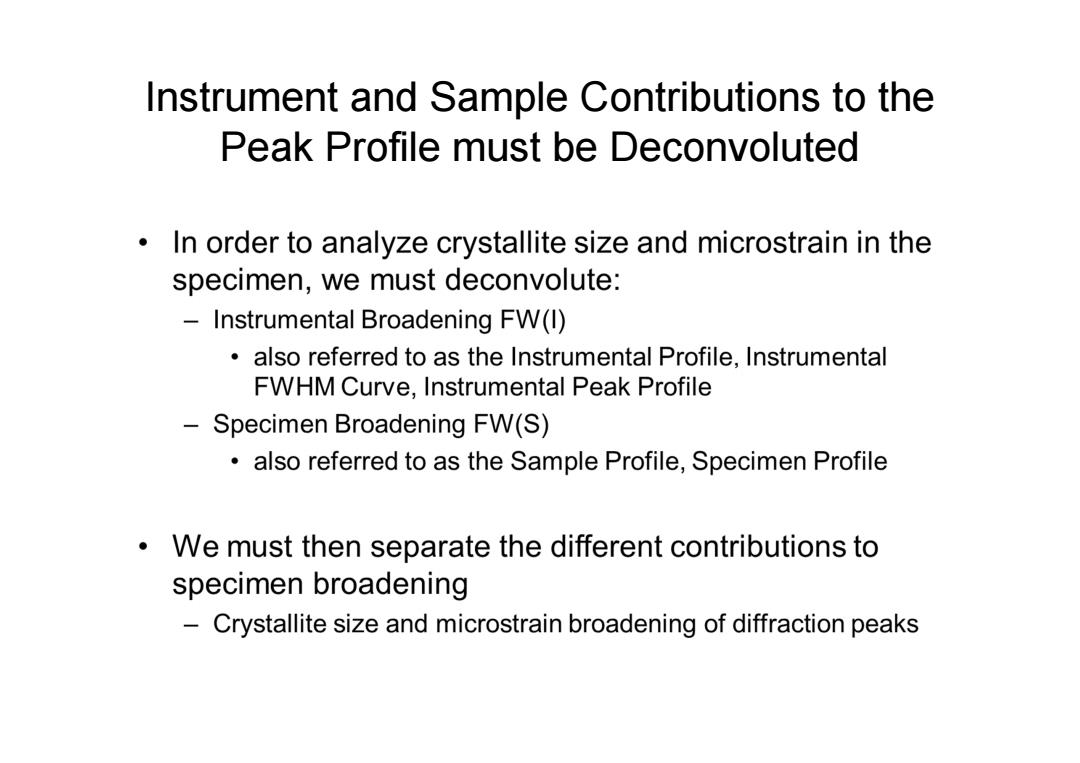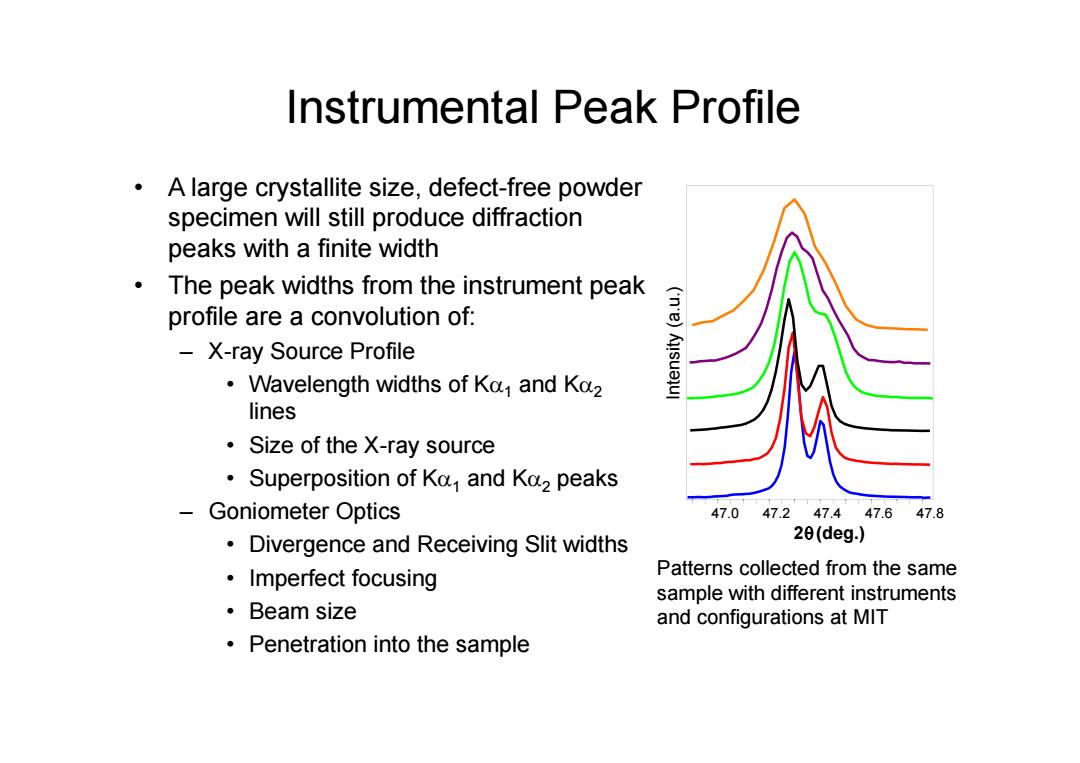
Understand the diffraction peak broadening in XRD Leyun Wang School of Materials Science and Engineering,SJTU leyunwang@sjtu.edu.cn
Understand the diffraction peak broadening in XRD Leyun Wang School of Materials Science and Engineering, SJTU leyunwang@sjtu.edu.cn

Definition of peak broadening Full Width at Half Maximum (FWHM) the width of the diffraction peak, FWHM in radians,at a height half-way between background and the peak maximum ·Integral Breadth the total area under the peak divided by the peak height 46.746.846.947.047.147.247.347.447.547.647.747.847.9 20(deg.) the width of a rectangle having the same area and the same height as the peak requires very careful evaluation of the tails of the peak and the (n'e) background 48745846947047.147247347447547847.7478479 20(deg-)
46.7 46.8 46.9 47.0 47.1 47.2 47.3 47.4 47.5 47.6 47.7 47.8 47.9 2 (deg.) Intensity (a.u.) Definition of peak broadening • Full Width at Half Maximum (FWHM) – the width of the diffraction peak, in radians, at a height half-way between background and the peak maximum • Integral Breadth – the total area under the peak divided by the peak height – the width of a rectangle having the same area and the same height as the peak – requires very careful evaluation of the tails of the peak and the background 46.746.846.947.047.147.2 47.347.447.547.647.747.847.9 2 (deg.) Intensity (a.u.) FWHM

Many factors may contribute to the observed peak broadening Instrumental Peak Profile ·Crystallite Size ·Microstrain Non-uniform Lattice Distortions Faulting Dislocations Antiphase Domain Boundaries -Grain Surface Relaxation Solid Solution Inhomogeneity ·Temperature Factors The peak profile is a convolution of the profiles from all of these contributions
Many factors may contribute to the observed peak broadening • Instrumental Peak Profile • Crystallite Size • Microstrain – Non-uniform Lattice Distortions – Faulting – Dislocations – Antiphase Domain Boundaries – Grain Surface Relaxation • Solid Solution Inhomogeneity • Temperature Factors • The peak profile is a convolution of the profiles from all of these contributions

Instrument and Sample Contributions to the Peak Profile must be Deconvoluted In order to analyze crystallite size and microstrain in the specimen,we must deconvolute: -Instrumental Broadening FW(I) also referred to as the Instrumental Profile,Instrumental FWHM Curve,Instrumental Peak Profile Specimen Broadening FW(S) also referred to as the Sample Profile,Specimen Profile We must then separate the different contributions to specimen broadening Crystallite size and microstrain broadening of diffraction peaks
Instrument and Sample Contributions to the Peak Profile must be Deconvoluted

Instrumental Peak Profile A large crystallite size,defect-free powder specimen will still produce diffraction peaks with a finite width The peak widths from the instrument peak profile are a convolution of: X-ray Source Profile ('n'e)Au!suejul Wavelength widths of Ka and Ko2 lines Size of the X-ray source Superposition of Ka and Ka2 peaks Goniometer Optics 47.047.247.447.647.8 Divergence and Receiving Slit widths 2θ(deg.) ·Imperfect focusing Patterns collected from the same sample with different instruments ·Beam size and configurations at MIT Penetration into the sample
Instrumental Peak Profile • A large crystallite size, defect-free powder specimen will still produce diffraction peaks with a finite width • The peak widths from the instrument peak profile are a convolution of: – X-ray Source Profile • Wavelength widths of K 1 and K 2 lines • Size of the X-ray source • Superposition of K 1 and K 2 peaks – Goniometer Optics • Divergence and Receiving Slit widths • Imperfect focusing • Beam size • Penetration into the sample 47.0 47.2 47.4 47.6 47.8 2 (deg.) Intensity (a.u.) Patterns collected from the same sample with different instruments and configurations at MIT